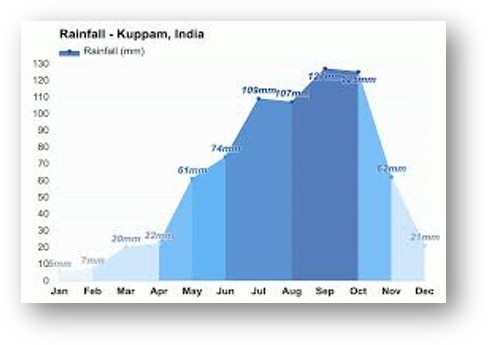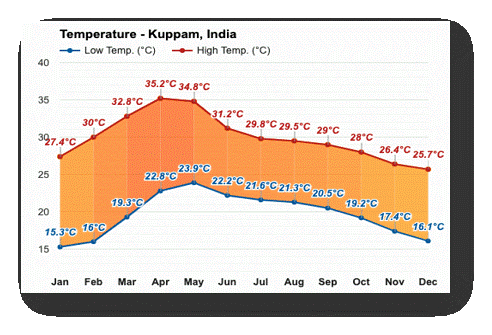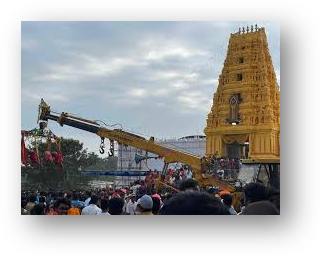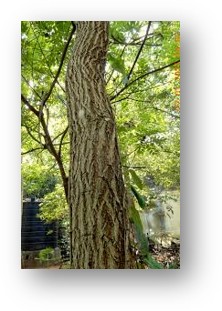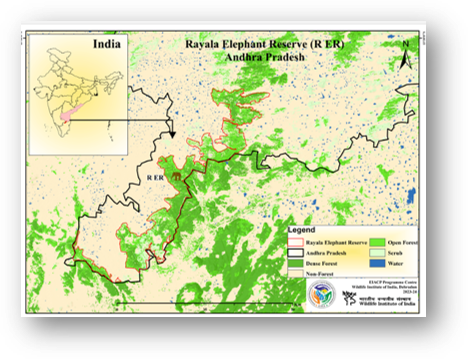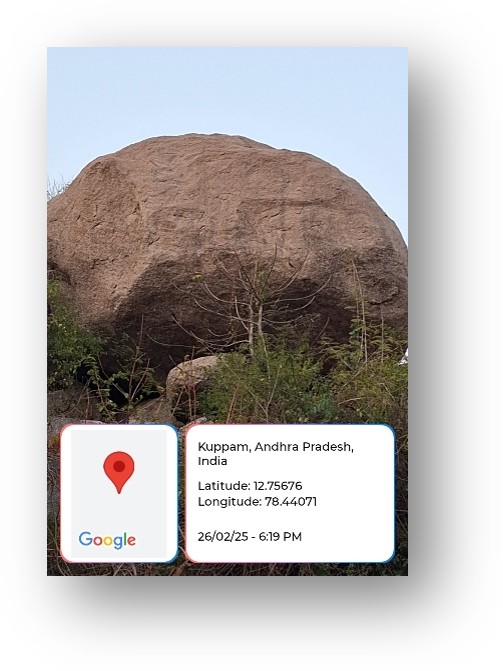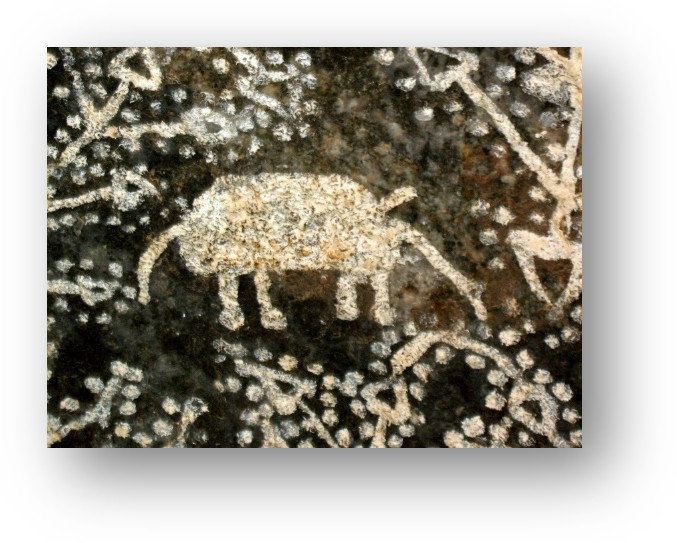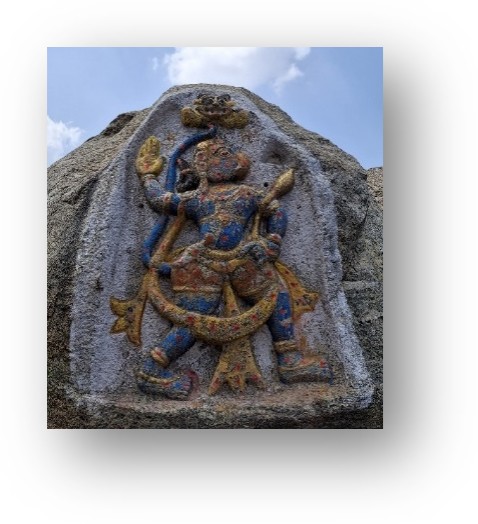About Kangundi
Kangundi boasts a rich history, vibrant culture, unique geology, and a distinct climate.
Climate of Kangundi, India
Kangundi experiences a tropical climate with distinct seasons, characterized by warm summers, moderate winters, and a well-defined monsoon period. The climate influences local agriculture, lifestyle, and tourism activities.
Temperature
– The average annual temperature in Kangundi is around 25°C (77°F).
– The hottest month is May, with an average high of 34°C (93°F).
– The coldest month is December, with temperatures dropping to an average low of 17°C (63°F).
– The summer months (March to June) witness high temperatures, often exceeding 30°C, while the winter months (November to February) remain mild and pleasant.
Rainfall & Monsoon
– The monsoon season extends from June to October, bringing significant rainfall.
– The wettest months are August and September, with an average rainfall of 120mm.
– The driest months are January and February, receiving minimal rainfall (less than 10mm).
– Post-monsoon showers can continue until early November.
Seasonal Overview
– Summer (March – June): Hot and dry, with temperatures peaking in May.
– Monsoon (June – October): Heavy rainfall, cooler temperatures, and high humidity.
– Winter (November – February): Pleasant weather with mild temperatures and little rainfall.
The climate of Kangundi makes it suitable for various agricultural activities, including paddy cultivation and horticulture. Travelers visiting the region should plan their trips according to the seasonal variations for the best experience.
Culture of Kangundi, India
Kangundi is home to a diverse population of around 6,000, with 90% Hindus and 10% Muslims. Being a confluence of Andhra Pradesh, Karnataka, and Tamil Nadu, people speak Telugu, Kannada, and Tamil.
Religious & Cultural Significance
– The main deity is Lord Shiva, worshiped in the 1,000-year-old Sri Malleswara Swamy Temple.
– Mahashivratri (February) is the most significant festival, featuring traditional dances, music, drama, and rural sports.
– The Pooja ceremony includes a trance-induced sacred bull climbing the Kangundi Inselberg.
– Every full moon, devotees circumambulate the Inselberg as a Shivling.
Festivals & Celebrations
– Ugadi / Pongal (March) marks the New Year celebration.
– Jatara (May) is a grand fair of Goddess Tirupati Gangamma, celebrated in Kuppam.
– The Mahabharata Festival lasts for 17 days in May, held in Yamagani Palli.
– Aadi Krithigai (July) is an intense festival celebrated in Gudivanaka.
– Diwali is celebrated with grandeur in November.
– Jallikattu (bull race) is an unmissable event showcasing traditional bravery.
Kangundi’s culture is a rich blend of traditions, religious rituals, and vibrant festivals, making it a unique and culturally significant location in South India.
Flora & Fauna of Kangundi
Kangundi is nestled in a moist, mixed deciduous forest rich in biodiversity.
Flora
– Dominant tree species include Teak, Red Sanders (sandalwood), Sapindus (soap nut), Shorea Tambaggia, and Syzygium Alternifolium.
– The forest supports a variety of plant species, making it an ecologically significant region.
Fauna
– The wildlife includes leopards, elephants, sloth bears, wild boars, wild dogs, hares, porcupines, giant squirrels, langurs, and pangolins.
– The area is part of the Koundinya Elephant Sanctuary, which provides a 360 km corridor for elephant migration.
– The Nanyala Elephant Camp, located 35 km from Kangundi, shelters Kumki (tamed tusked) elephants.
Natural Water Bodies
– The Palar River, originating in Karnataka’s Nandi Hills, flows near Kangundi on its way to the Bay of Bengal.
Kangundi’s forests and wildlife make it a critical conservation area, attracting nature enthusiasts and researchers alike.
Geology of Kangundi, India
Kangundi is part of the ancient Eastern Ghats, known for its unique rock formations and rugged landscapes. The region features towering inselbergs, granite tors, and charnockite boulders, making it a paradise for geologists and bouldering enthusiasts.
Rock Formations
– The landscape consists of inselbergs (isolated rock hills) and tors (granite mounds), which have formed over millions of years.
– The rocks here predate the Indo-Eurasian plate collision, making them geologically ancient.
– The formations resemble those found in Hampi, another famous bouldering destination in India.
Composition & Geological Age
– The region is primarily composed of granite and charnockite, which provide a solid and durable surface for climbing.
– The granite boulders are weathered yet sturdy, offering excellent grip for climbers.
– These formations date back to the Precambrian era, making them some of the oldest rock structures in India.
Bouldering & Natural Features
– The rock formations create natural bouldering routes, varying in difficulty levels.
– The tors and cracks provide excellent holds and challenges for climbers.
– The elevated terrain and rocky outcrops offer breathtaking panoramic views of Kangundi’s surroundings.
Soil & Minerals
– The dominant red and lateritic soils support diverse flora and fauna in the region.
– Rich in feldspar, quartz, and mica, Kangundi holds geological significance.
– The minerals present contribute to the unique textures and colors of the rock formations.
Kangundi’s extraordinary geological history, combined with its rugged beauty, makes it an unparalleled destination for nature lovers, rock climbers, and adventure seekers.
History of Kangundi, India
Kangundi has a rich historical legacy, spanning from the Neolithic era to the present day. It has been home to ancient civilizations, powerful dynasties, and remarkable fortifications that reflect its strategic significance over the centuries.
Ancient Civilizations & Early Settlers
– The region has been inhabited since the Neolithic period (1,200-800 BCE), as evidenced by ancient cave art found in Kangundi.
– The indigenous tribes of Irulas and Boyas have lived in the area for thousands of years, preserving their unique traditions and lifestyles.
– The presence of rock carvings and temple sculptures links Kangundi to early Dravidian cultures.
Kangundi Fort & Dynasties
– The Kangundi Fort, built in the 11th century by Kambi Naidu, was a stronghold due to its natural defenses.
– For over 900 years, the fort was ruled by 28 kings of the Kambi Nayudu dynasty, who served as satraps under powerful empires.
– Kangundi was under the control of the Chola Empire, later becoming a vassal of the Vijayanagara Empire, then the Mysore Kingdom, and finally the British Raj.
Temple Architecture & Symbolism
– The region has distinctive temple architecture, including depictions of Yali (a lion-elephant hybrid guardian) and Keertimukha (a protective deity face).
– These artistic elements indicate strong influences from the Chola and Vijayanagara dynasties of the 6th century CE.
– The **Sri Malleswara Swamy Temple (1,000 years old)** is an important cultural and spiritual site.
Modern History & Significance
– Mallappakonda in Kuppam marks the **tri-junction** of Andhra Pradesh, Karnataka, and Tamil Nadu, symbolizing cultural convergence.
– Dravidian University was established in 1997 in Kuppam to preserve and promote Dravidian heritage.
– Kangundi remains a historical and cultural treasure, with efforts being made to preserve its heritage and promote tourism.
From ancient cave art to the rule of legendary dynasties, Kangundi’s history is a testament to its resilience, heritage, and strategic importance.
